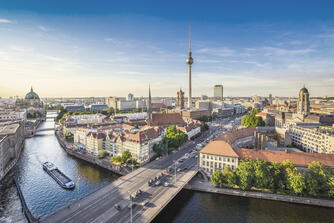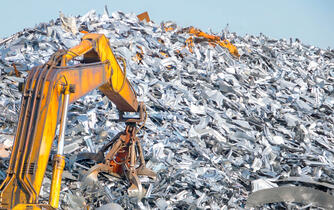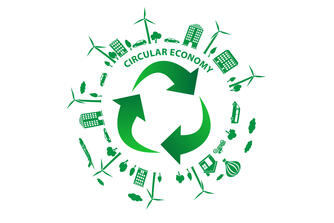Recycling
Recycling of steel scrap is important success factor

In Germany, around 60% of production value in the manufacturing sector is steel-intensive. In Germany alone, steel recycling avoids more than 20 million tons of CO2 per year.
That's as much CO2 as Berlin releases in a year.
In order to meet all steel demand and produce higher grades of steel, companies must follow the new path of direct reduction (DRI) and electric arc furnaces (EAF). In Europe, steel is already widely recycled, but in other regions, such as China, there is significant untapped potential for the use of recycled scrap. Nevertheless, scrap is likely to be scarce on a global scale and therefore cannot fully replace steel production from iron ores. In the long term, scrap will remain a valuable raw material, as significant emissions can be saved in the transitional period of conversion through the increased use of scrap in the various processes.

Steel is 100% recyclable and can be melted down an infinite number of times. The use of steel has a positive impact on the eco-balance. The material is a starting material in numerous value chains that make valuable contributions to climate protection and resource conservation.
An efficient and competitive local steel industry is crucial to fully exploit the benefits of the circular economy. Steel makes it possible to close further material cycles (e.g. glass recycling).
Steel provides important starting materials that are used in climate protection. The more frequently steel is recycled, the smaller its ecological footprint. The material can be used in a variety of ways and variably for alloying, post-treatment and further processing in all kinds of product chains.
- Steel is magnetic, making it easy to sort and separate.
- Steel can be easily divided, separated, pressed and transported.
- There are already established and functioning take-back systems and innovative (steel scrap) reprocessing plants.

Steel recycling helps to avoid the emission of the greenhouse gas CO2 and to save energy and resources. In addition to the recycling cycle, however, steel produced and processed in Europe in particular also leads to CO2 savings due to the greatly reduced transport distances.